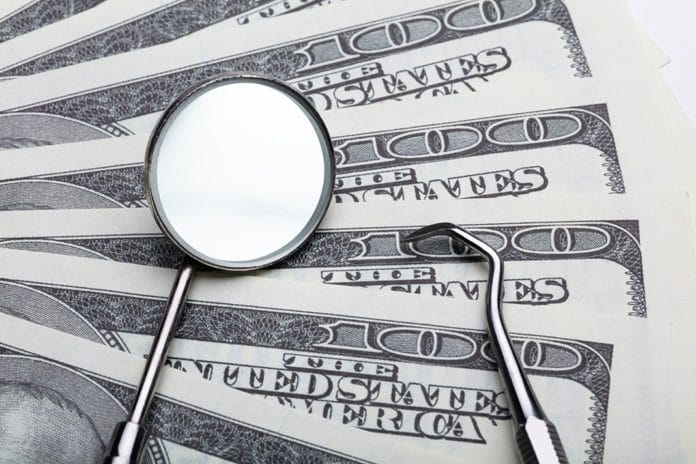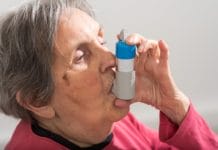Dental professionals could have never imagined a time when dental offices across the country would close with only emergency services deemed essential. The shutdowns imposed on dental offices were meant to shift personal protective equipment to where it was needed most. This created conversations in the dental community on social media filled with worry, confusion, and anger.
Most shocking were the comments where the need for a dental hygienist in a dental practice was questioned. Dental hygiene itself was never, and will never be, nonessential. The same should be said for dental hygienists who study for several years to provide professional preventative oral health care.
The American Dental Association (ADA) describes the duties of a dental hygienist to include assessing oral health, oral cancer screenings, health history review, dental charting, removal of calculus and plaque from all surfaces of the teeth, applying preventative materials such as fluoride and sealants, and taking and developing radiographs. Dental hygienists also have an important role in educating patients on oral health strategies for optimal oral health and nutritional counseling.1
The financial aspect of the business of dentistry is not generally addressed in dental hygiene school. As licensed professionals who contribute to the office’s overall productivity, dental hygienists should gain an understanding of what our role is in the profitability of the practice. Common benchmarks for a successful dental hygiene department include:
- 25%-35% of gross practice production
- 75% of restorative needs found during dental hygiene visits
- A third of dental hygiene procedure codes should be periodontal codes
- Downtime should be less than 5-8% of available time
- Dental hygienists should produce three times their wages
Hygiene Means Profitable Practices
The dental office can be divided into three areas − front business desk, restorative, and hygiene. The dental hygiene department should consistently be the second most profitable department in a dental practice.4 In staff meetings, it is important as a team to evaluate financial reports, no-shows, total production, total collections, collection/production ratio, and production referred to the practice. Understanding the salary/production ratio is imperative when considering requesting a pay increase.
Offices that employ dental hygienists have higher gross billings and higher expenses, but higher net income as well. The ADA’s annual survey of dental practices consistently finds that majority of dental offices do employ a dental hygienist. In a survey of 854 dentists, 60.6% employed a dental hygienist, and 39.4% did not (that figure rose to 51.7% of part-time solo dentists).2,3
There are several reasons a dental practice may not employ a dental hygienist. The first is not having enough patients. A practice needs 800 to 1,000 patients for one full-time dental hygienist to stay busy. If a dentist has seven to eight recare visits scheduled in a week, it may be time to employ a dental hygienist for one day.
Other dentists may not wish to take on the managerial duties of more employees, or they may like providing preventative care themselves. A solo dentist may be concerned that employing a dental hygienist may push patient demand beyond their capacity.3
Solo practices without a dental hygienist were found to see a higher percentage of Medicaid patients while those with dental hygienists saw a higher percentage of patients with private insurance.5
So, to the question at hand … what is a dental hygienist’s actual monetary worth to a dental practice? Annual gross billings of a solo dental practice with a dental hygienist are 41% or $231,134 greater than that of a practice with no dental hygienist. Annual net income of a solo practice with a dental hygienist is 31% or $56,102 greater than a solo practice without a dental hygienist.
The presence of a dental hygienist has a positive value of $237,567 on gross billing. The positive value of the presence of a dental hygienist on net income even after adjusting for other factors that may influence net income like dentist’s age, patient load, office size, time spent treating patients, and experience is $58,290.3
Creating More Value
Dental hygienists hoping for continued growth in their practice can help to create more value by improving scheduling, calculating and decreasing downtime, reactivating past due patients, identifying periodontal problems, and treating at an early stage. Keep track of restorative treatment referred from the hygiene department. Remember the goal of identifying 75% of patient’s restorative needs during dental hygiene appointments. Other services like whitening, periodontal antibiotics, intraoral irrigation, oral cancer brush biopsies, and salivary diagnostic testing can all be incorporated into a dental hygiene appointment.4
Dental hygiene assistants should be considered since they can increase hygiene profitability by 30%. Dental hygienists may normally see seven to eight patients a day while those with an assistant may see 12 to 13. Dental hygiene assistants review medical history, assist the dental hygienist with charting, expose radiographs, turn over operatories, and sometimes polish and floss. This frees the dental hygienist to see more patients and increase the hygiene department’s profits.
The monetary value of a dental hygienist is truly only half the story. Patients see their dental hygienist more often than they may see their physicians. By building personal relationships, dental hygienists are in an optimal position to promote and explain elective and necessary restorative treatment while administering preventative care as an educated and trusted provider. It is no surprise that dental hygienists are an obvious asset to any dental practice in more ways than one.
Need CE? Check Out the Self-Study CE Courses from Today’s RDH!
Listen to the Today’s RDH Dental Hygiene Podcast Below:
References
- Dental Hygienist. American Dental Association. Retrieved from www.ada.org/en/education-careers/careers-in-dentistry/dental-team-careers/dental-hygienist
- Dental Practice. Dentist Income, Workload and Private Practice Expenses and Billings. American Dental Association. Nov. 2019. Retrieved from www.ada.org/en/science-research/health-policy-institute/data-center/dental-practice
- Lazar, V.F., Guay, A.H., Beazoglou, T.J. Economic Impact of Dental Hygienists on Solo Dental Practices. Journal of Dental Education. 2012; 76: 1045-1053. doi:10.1002/j.0022-0337.2012.76.8.tb05357.x
- Levin RP. Increasing Hygiene Productivity. Compend Contin Educ Dent. 2003; 24(3): 170-172.
- Pourat, N. Differences in Characteristics of California Dentists Who Employ Dental Hygienists and Those Who Do Not. J Am Dent Assoc. 2009 Aug; 140(8): 1027-1035. Retrieved from https://pubmed.ncbi.nlm.nih.gov/19654257/












